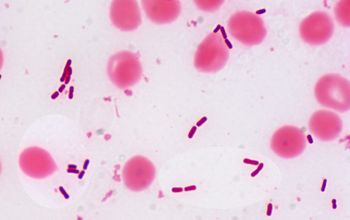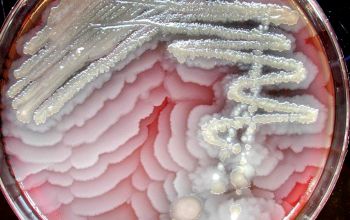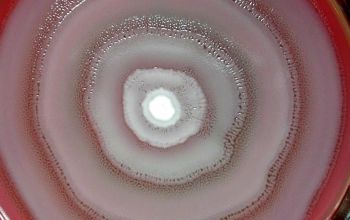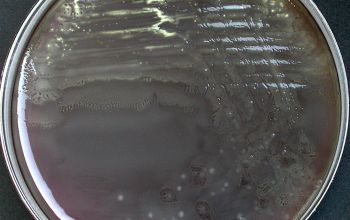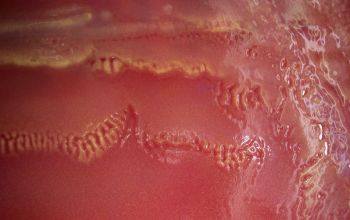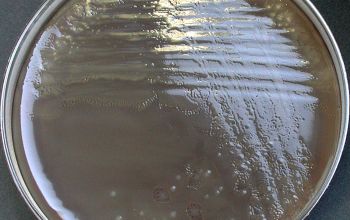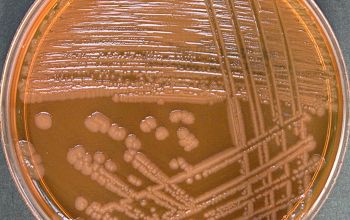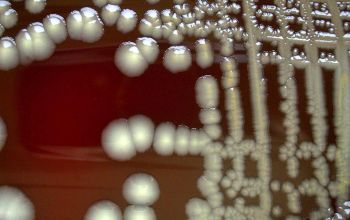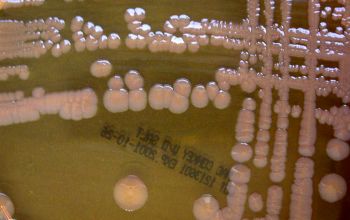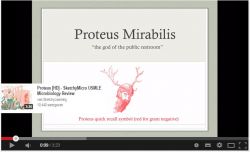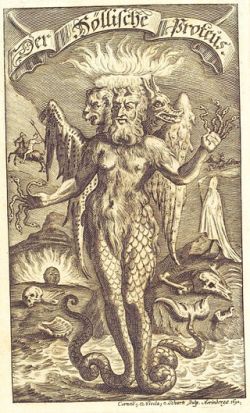Seventeenth-century German image of Proteus, the Sea God
Proteus is a Greek god of the sea who is capable of changing his form at will.
This association explains the word “protean,” which is used to describe something extremely flexible or ever-changing.
Though this god is not as well-known as some members of the Greek pantheon, he appeared in a few Greek myths, and his name suggests that he may be quite old, given that protos means “first” in Greek.
http://commons.wikimedia.org/wiki/ File:Hoellischer_Proteus.jpg
Proteus mirabilis
-
General information
Taxonomy
Family: Morganellaceae
genus Proteus mirabilis
Natural habitats
Proteae occur in humans, animals and the environment, especially in locations where animal protein decomposes.
Clinical significance
They are found in urinary tract infections and wounds.
Very often these infections are caused by their own fecal flora. P.mirabilis occurs in patients with chronic wounds, leg ulcers and decubitis. In people with congenital or anatomic abnormality of the urinary tract or a stone in the urinary tract, are predominantly Proteus infections.
They quickly put this urea into ammonia, which creates an alkaline environment.
This can be harmful to the kidney and promotes the formation of stones materials consist of a biochemical complex, which is called struvite.
In the stone Proteus bacteria can survive despite therapy, leading to chronic UTI.
-
Gram stain
Gram negative rods,
0.4-0.6 x 1.0-3.0 µm,
ranging length from coccoid rods to long wire forms.
Proteus species produce special cells that swarms, these long cells are formed as the cells no longer divide
-
Culture characteristics
-
Facultative anaerobic
These bacteria usually swarms
Swarming
Can be seen as a thin, transparent colorless and sometimes almost invisible layer. It spreads from the colony in waves.
Bacteria on the edge of a growing colony are more volatile than those in the center of the colony.
They move en masse of the colony until the motility is reduced and the bacteria remain motionless on the spot, but it will multiply.
This creates a new group of young micro-organism, which in turn is swarming.
This phenomenon can be seen as a number of concentric rings around a colony, consisting of alternating a lot or little bacteria.
McConkey: growth non lactose fermenter
BBAØ: growth
-
-
Characteristics
-
References
James Versalovic et al.(2011) Manual of Clinical Microbiology 10th Edition
Karen C. Carrol et al (2019) Manual of Clinical Microbiology, 12th Edition

